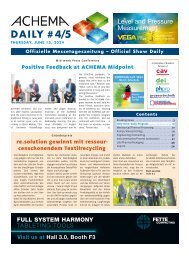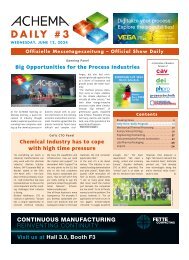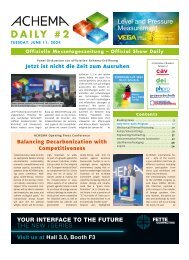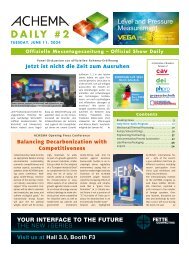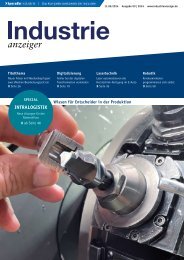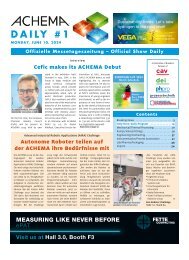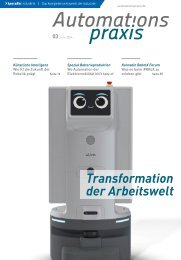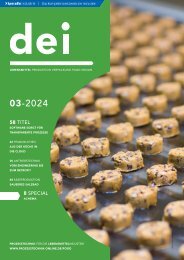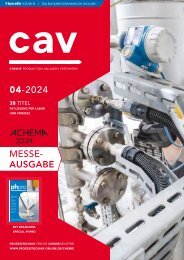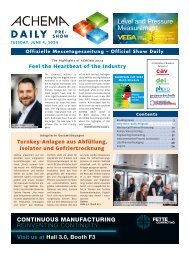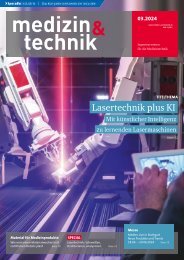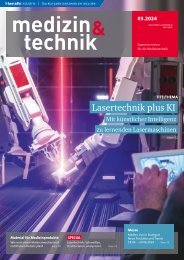EPP Europe P2.2023
Create successful ePaper yourself
Turn your PDF publications into a flip-book with our unique Google optimized e-Paper software.
Source: Indium Corporation<br />
The 0.004“-thick stencils exhibit more than 4% more void<br />
area than 0.005“ stencils<br />
Source: Indium Corporation<br />
There appears to be a<br />
slight reduction of<br />
void area with smaller<br />
particle sizes in the<br />
solder paste from<br />
types 4 to 4.5 to 5.<br />
Only the difference<br />
between type 3 and<br />
the other sizes is<br />
statistically significant<br />
The top X-ray images<br />
show poor area voiding<br />
percentages greater than<br />
30%, while the bottom<br />
photos show voiding of<br />
less than 10%<br />
Source: Indium Corporation<br />
Void percent area as a function of solder pastes. Note the<br />
significant difference between pastes, some as low as 5%<br />
voids and others around 45%<br />
Source: Indium Corporation<br />
Solder pastes<br />
We performed a final experiment in which we<br />
evaluated the effect of different solder paste flux vehicles<br />
on voiding. Three PCBs with 12 QFNs each<br />
were used for each solder paste, for a total of 36<br />
QFNs per paste. The results were striking, as seen in<br />
Figure 11. Some pastes produced about 5% voids,<br />
while others produced as much as 45%. These results<br />
were not only surprising, but also very encouraging.<br />
While the generation of voids is a complicated<br />
process with many variables, selecting the solder<br />
paste alone, with a standard assembly process can<br />
assure voiding area levels of less than 10%.<br />
Conclusions<br />
Although the factors that generate voids are many,<br />
by adopting a standard process as described, several<br />
parameters can be set to minimize voiding. The<br />
strongest determinant in the assembly process is to<br />
have a hotter peak temperature reflow profile. This<br />
factor alone reduced voiding area percent from an<br />
average of about 22% to less than 8%. Although<br />
finer solder particle size reduces solder voiding, the<br />
result was only statistically significant by going from<br />
Type 3 to Type 4 or finer. Type 3 pastes produced<br />
more than 10% more void area than Type 4 or finer.<br />
Using a stencil thickness of 5mils reduced voiding<br />
about 4% on average as compared to 4mil stencils.<br />
The greatest surprise, however, was how significant<br />
solder paste formulations were in reducing voiding.<br />
The better solder pastes significantly reduced voiding<br />
to less than 6% void area, whereas the worst paste<br />
produced greater than 45% voiding.<br />
Productronica, Booth A4.309<br />
www.indium.com<br />
To be continued...<br />
The second part of this paper, in<br />
which Flanagan, Belfield, and<br />
Hotvedt detail the additional<br />
investigations they have undertaken<br />
to identify and refine void reduction<br />
strategies will be published in our<br />
April 2024 issue.<br />
<strong>EPP</strong> <strong>Europe</strong> » 11 | 2023 37



